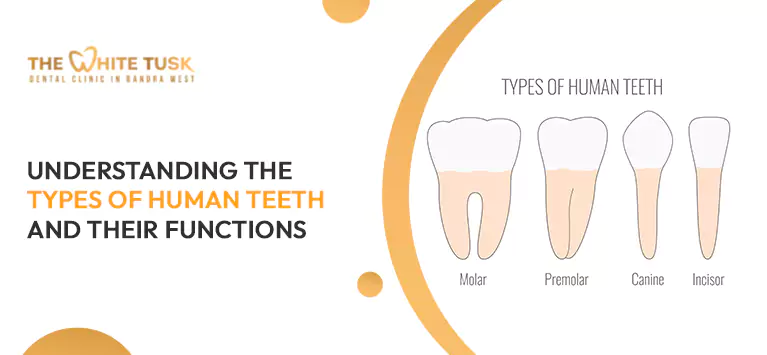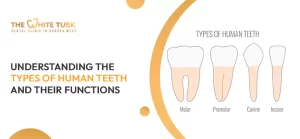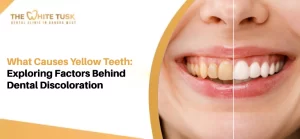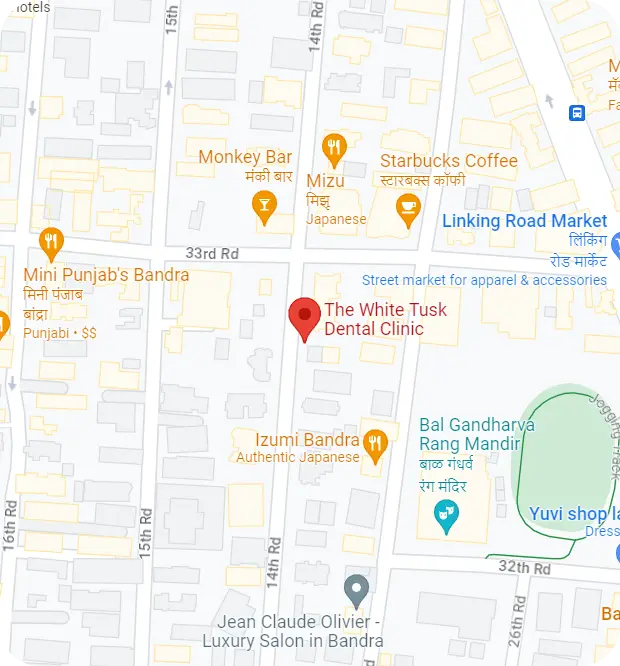
Understanding the Types of Human Teeth and Their Functions
Our teeth play a significant role in our daily lives. These things are crucial for everyday things like chewing, clear communication, and feeling good about our smiles. But did you know that humans have different types of teeth, each with its unique shape and function? In this blog, we will take a closer look at the different types of human teeth, their functions, and the various types of dental and medical health issues that may arise from improper dental care.
Types of Human Teeth
Human teeth are typically categorised into four main types: incisors, canines, premolars, and molars. Each type of tooth is specialised to perform specific functions, collectively contributing to chewing, speaking, and maintaining facial structure.
Incisors
The incisors at the front of the upper and lower jaws are essential for cutting and biting into food. Their flat, chisel-shaped edges enable precise incision and play a crucial role in the initial stages of food consumption. This allows individuals to grasp and shear off food portions for further processing by the other teeth. Additionally, the appearance of the incisors dramatically contributes to a person’s smile and facial aesthetics.
Canines
The canines, called “eye teeth,” are the sharp, pointed teeth next to the incisors. Their distinctive pointed shape and extended roots make them especially effective for tearing and gripping food. Historically, canines played a crucial role in diets that were heavy in meat, allowing for efficient tearing of food. Even though modern diets have evolved to be more varied, these teeth serve a vital function. Beyond their role in eating, canines are essential for maintaining the proper alignment of the jaw. They act as guides that ensure the rest of the teeth align correctly when the mouth closes, contributing to a balanced and functional bite.
Premolars
The premolars, located directly behind the canines, feature a flat surface with ridges. This design makes them ideal for crushing and grinding food, facilitating the initial breakdown into smaller, more manageable pieces. This crucial process not only aids in digestion but also ensures that the food is adequately prepared for the subsequent stages of digestion. As the food becomes more fragmented, it then progresses to the back of the mouth, where the molars continue the process, further pulverising the food to make it easier for the digestive system to absorb nutrients.
Molars
The molars, positioned at the back of the mouth, are the most prominent and strongest teeth. Designed with flat and broad surfaces, they grind food into an easily swallowed and digested consistency. Playing a pivotal role in the final chewing stages, these teeth ensure food is thoroughly processed. This facilitates easier swallowing and significantly aids digestion, making the extraction of nutrients more efficient.
Functions of Human Teeth
Each type of human tooth serves a specific function, contributing to digestion, speech articulation, and facial structure support.
Chewing and Grinding
The incisors, canines, premolars, and molars work harmoniously to break down food into smaller pieces, making it easier to swallow and digest. The incisors and canines play a role in biting and tearing food, while the premolars and molars are responsible for crushing and grinding it.
Speech Articulation
The shape and arrangement of our teeth play a crucial role in shaping the sounds we make when speaking. The position of the tongue against the teeth and the airflow through the mouth are influenced by the teeth, particularly the incisors and canines, aiding in clear and distinct speech.
Support for Facial Structure
The teeth, particularly the premolars and molars, provide essential support for the shape and structure of the face. They help maintain the height of the face and support the muscles of the cheeks, contributing to overall facial aesthetics and function.
Digestive Health
Proper chewing, facilitated by all types of teeth, is essential for the initial stages of digestion. Thoroughly chewed food is more accessible for the stomach and intestines to process, improving nutrient absorption and overall digestive health.
Caring for Teeth
It is essential to care for our teeth and gums properly to avoid these and other health issues. Good oral hygiene includes:
- Regularly brushing and flossing our teeth.
- Using mouthwash.
- Visiting the dentist regularly for check-ups
Eating a healthy diet rich in calcium and other essential nutrients can also help to keep our teeth and gums healthy and strong.
Tooth decay occurs when bacteria in our mouths use sugars and starches from our food to produce acid that attacks and damages our tooth enamel. This can lead to cavities, which can be painful and may require fillings or even root canals. To prevent tooth decay, it is important to avoid sugary and starchy foods and drinks and to brush and rinse our teeth regularly.
Gum disease occurs when bacteria build up on our teeth and gums, causing inflammation and infection. This can lead to bleeding, swelling, and receding gums, as well as tooth loss if left untreated. To prevent gum disease, brushing and flossing our teeth regularly and visiting the dentist for cleanings and check-ups are essential.
Conclusion
Human teeth are vital to our well-being, from food consumption to speech clarity and facial structure support. Proper dental care is essential to maintain optimal health. By understanding the roles of incisors, canines, premolars, and molars, individuals can appreciate the remarkable nature of human dentition and commit to oral hygiene. Regular dental check-ups, brushing, and flossing are essential to keep your teeth healthy and functional. Happy smiling and chewing!







